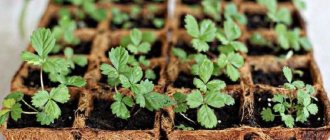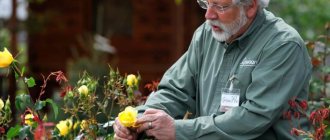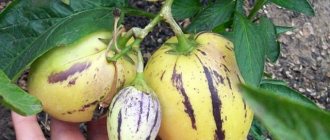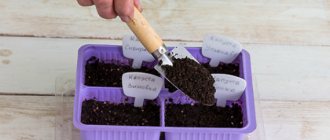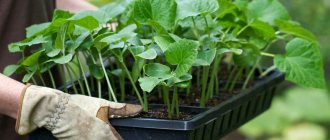Phloxes are constant inhabitants of flower hills and flower beds. They serve as an excellent decoration for a summer cottage and are distinguished by a variety of types, each of which captivates the eye with its decorative properties. These plants are popular both among professional gardeners and among amateurs, for whom growing phlox from seeds at home is an extremely interesting topic.
Annual phlox flower - description
The vast majority of phlox are perennial herbaceous plants, the tops of which are decorated with small flowers collected in corymbose-shaped bunches. By cold weather, the above-ground stems of perennial phlox die off, and the roots overwinter in open ground, sprinkled with leaves and snow. In spring, new shoots sprout from the roots of perennials.
phloxes in the flowerbed
Annual phloxes need to be regrown every year. This is done through seedlings or by sowing seeds directly into the ground. Phlox seedlings turn into branched, lush, low-growing shrubs with colorful, dense inflorescences.
The size of phloxes and the intensity of their color depend on the growing conditions - mini phlox varieties with abundant watering and fertilizing, sufficient lighting can grow up to 1.0 m and be very bright; under normal conditions, these phloxes will not grow higher than 30 cm.
Drummond phlox in the flower garden
When to plant phlox seedlings in 2022 according to the lunar calendar
Experienced flower growers always turn to astrologers and the lunar calendar they compiled for recommendations. This helps you decide when is the best time to plant phlox.
Planting phlox seedlings in 2022 according to the lunar calendar, favorable days
According to the lunar calendar of 2022, the favorable dates when you can plant and get high-quality seedlings, and subsequently lush, fragrant flowers, are:
- February: from 3 to 14, from 19 to 21;
- March: from 3 to 16;
- April: from 3 to 14.
IMPORTANT! These dates are most favorable for planting seeds, but also on these days any work related to growing flowers will be successful.
When is it not worth sowing phlox seeds in 2022 according to the lunar calendar?
Do not forget that there are dates when any work with the soil, and, first of all, sowing seeds is strictly prohibited.
Una these days is in that phase or in that constellation that inhibits the development of any shoots. Seeds planted during these dates may not germinate at all. In 2022, these numbers were:
- February: 1, 2, 15, 16, 17, 24, 25, 28;
- March: 1 - 3, 17 - 19, 23, 24, 27, 28;
- April: 1, 2, 15 - 17, 19, 20, 29, 30.
Reproduction of annuals
Annual phloxes reproduce by seeds. It was once believed that planting and caring for annual phlox was a very difficult task that did not always end successfully. Not everyone was able to see phlox sprout.
Phlox: planting and care in open ground
But then we noticed that sometimes in the spring self-sowing seedlings appear, the seeds of which fell to the surface of the soil in the fall and no one covered them with soil. And if rain and melted snow did not wash these seeds into the holes, they sprouted successfully.
Important! Phlox seeds require sunlight to germinate.
Phloxes are propagated in two ways. In southern regions and areas of mild temperate climates, seeds are sown directly on the soil surface. In areas with harsh winters, in the mountainous regions of the Urals and Siberia, seedlings are first grown. Annual phloxes, seedlings of which were grown from freshly harvested seeds, will be resistant to diseases and pests.
Necessary conditions for growing seeds
In order to successfully grow annual phlox, you need to follow several rules:
- For sowing, only large seeds from fully ripened seed pods are selected;
- to obtain large seeds on mother plants, several stems with inflorescences and stepsons are removed, half of the buds are left in the inflorescences;
- Healthy, well-developed bushes are used as a mother plant; they are intensively fed and watered.
Additional information: if the seeds do not have time to fully ripen in the seed pods before the onset of cold weather, the branches with pods are cut off, tied into bunches, placed in a gauze bag and left to dry completely in a ventilated area at room temperature.
To form a spherical bush and form numerous side shoots, phloxes begin to be pinched at the seedling stage. After the 5th leaf appears, the top of the central stem is either cut off or pinched by hand.
Preparing seeds for sowing
Dried boxes with Drummond phlox seeds are stored in a cold place - the basement, the vegetable compartment of the refrigerator. Seeds are not removed from the boxes until they are sown. This is due to the fact that the seeds quickly dry out in the air and lose their viability.
A few days before sowing, the seeds are poured out of the testes and soaked in a pink solution of potassium permanganate for 10-15 minutes. The floating seeds are discarded, the rest are washed in running water. Then they are dried, spread on a paper towel, and planted in a nursery.
Seeds
How to sow seeds for seedlings
Phlox seeds take a long time to germinate - up to 3-4 weeks. Therefore, seeds for seedlings are sown in early to mid-March. Placement boxes must have sides at least 5 cm high and drainage holes. Moistened soil substrate is poured to 3/4 of the height of the box. The soil surface is compacted with the back of a tablespoon or scoop.
Using a damp toothpick, seeds are distributed over the surface of the soil in rows at intervals of 3-5 cm and lightly sprinkled with a thin layer of sand. Sowing can also be indiscriminate - for this, the seeds are mixed with sand and scattered around the box as desired.
Mini-greenhouse conditions are created in the boxes: they are covered with glass or transparent plastic. Periodically check for signs of mold and pests, ventilate and moisten.
Note! Seeds can be sown immediately in individual volumetric containers, in which case there is no need to pick seedlings.
What does phlox seedlings look like?
After the seeds hatch, it will take at least 2-3 weeks for 2 pairs of true leaves to grow.
At this time, the plants are planted - transplanted into larger boxes; a distance of 8-10 cm is maintained between the bushes.
In three months, the plants will already have 5-6 pairs of leaves and the first buds.
Young seedlings
When to sow phlox seedlings in different regions, table
Since each region has different weather and climatic conditions, the planting procedure may be postponed to a later or earlier date.
| Region | When is the best time to plant |
| Moscow region and central Russia | First and second ten days of March |
| Ural, Siberia | End of March – beginning of April |
| Leningrad region | The most favorable time is the third ten days of March - the first ten days of April |
| Southern regions | Third ten days of February - March |
IMPORTANT! When planning planting, be sure to familiarize yourself with the characteristics of the variety you have chosen and weather forecasters for the near future.
Rules for caring for seedlings
The containers in which the seeds are sown are kept at room temperature no higher than +25°C. After the seedlings appear, the boxes with them should be exposed to light for at least 12 hours a day.
Perennial phloxes: planting and care in open ground
If the seedlings begin to stretch, then reduce the ambient temperature to +15+18°C and lengthen the daylight hours to 14-15 hours. Lamps are used to artificially illuminate seedlings.
The soil in the seedling boxes is kept constantly moist. Avoid excessive watering, otherwise the roots may rot. Before planting in the flower garden, plants are fed with nitroammophoska or other complex preparations.
Attention! Phlox after transplanting into open ground will hurt for the first two weeks.
Unlike plants that grow from seeds immediately in a flower garden, the tips of the root shoots of seedlings suffer even with the most careful handling. Therefore, it is during this period that transplanted plants require timely watering.
Adult seedlings
How to plant phlox seedlings with seeds at home, photo
You can plant flowers for seedlings in different ways. Let's look at the most popular ones, which are most often used by flower growers.
Planting in a container
This is the most common planting method, since a large number of seedlings can be grown in one container. Planted according to the following scheme:
a drainage layer is poured onto the bottom of the container; on top of the drainage there is a layer of prepared substrate, which is slightly moistened;
then the seeds are distributed evenly over the entire surface at a distance of about 1.5 cm from each other using a toothpick or tweezers;
The seeds are covered with a thin layer of substrate on top and the container is placed in a transparent bag until shoots appear.
Landing in the "snail"
A very convenient method that makes picking seedlings easier. Planting is carried out as follows:
- a thin layer of nutritious soil is poured onto a strip of fabric or toilet paper;
- seeds are placed on it at a distance of 2 cm from the edge of the paper and 2 cm from each other;
- a thin layer of earth is poured on top and the strip is rolled into a snail;
- The resulting bundle is placed in a container of water to saturate the soil and placed in a transparent bag after the sprouts appear.
Planting in peat tablets.
The most convenient way, but requires financial costs:
- The tablets are immersed in a container with warm water for 20-30 minutes to swell;
- in the swollen tablets, use a toothpick to make a depression in the center and place a seed there;
- The tablets are also placed in a transparent bag and left until germination begins.
Annual phloxes: care features
- Choosing a site for planting, soil
Perennials and annuals require the same growing conditions - nutritious loose soil with neutral acidity, moderate occurrence of soil water, a plot of land well protected from the wind, and plenty of light.
- Flower care during and after flowering
Phlox spread blue: planting and care
A well-established flower grows a stem and increases the number of leaves, producing many inflorescences that form a dense bunch. Plants need good nutrition, which comes through the roots along with moisture.
Watering is carried out as the soil dries. Do not allow the formation of a surface soil crust - carry out regular, careful loosening.
Make sure that there are no weeds in the root zone and near the plants; they constantly pick off wilted, dried flowers along with their stems.
- Preparing for winter
Attention! In autumn, the seed boxes are cut off from the mother plants, the stems and rhizomes are removed, the soil is dug up and work is carried out to increase the fertility of the flower garden.
How to feed phlox for abundant flowering
During the entire flowering period, it is necessary to carry out 3 nitrogen mineral fertilizing, alternating with organic fertilizers - aqueous extracts of ash, chicken droppings containing potassium and calcium, and herbal infusion.
The first nitrogen fertilizing is carried out before planting seedlings in the flower garden. Then the condition of the plants is observed. Signs of a lack of nutrition will be yellowing of the leaves, inhibited growth of stems, and a decrease in the size of flowers.
Why don't perennial phlox bloom?
Perennial or annual phloxes will not be able to bloom if they grow in dense shade.
Their stems will become thinner and elongated. The plant will devote all its strength to getting to the sun, because without it the processes of photosynthesis will not take place, and there will be no strength left for flowering.
In addition, planting and caring for annual and perennial phlox should ensure that the plants do not suffer from a lack or excess of moisture and nutrients, do not get sick and are not attacked by pests.
What to plant next to phlox
The various varieties of Drummond complement each other well.
Phlox star rain
For example, the colorful colors of the Star Rain variety allow you to create compositions only from plants of this species.
But still, if you plant chrysanthemums, delphiniums, aquilegias and double Drummond phlox nearby, the flower garden will become a decoration for any garden plot or flower bed in a park area.
This is interesting: when planting these plants, gardeners often use the recommendations of the lunar calendar so as not to miss the most favorable dates for planting seedlings.
What varieties are suitable
The right to choose flower varieties is left to amateurs. Despite their lush and long flowering, breeders are now choosing varieties with dense stems, bushy structure and voluminous flowering.
Paniculate
Phloxes of this variety are distinguished by lush and long flowering. The stems of the plants are very strong and become woody as they grow. The bush is dense, with a voluminous head of inflorescences. This variety is also planted in shaded areas, but the bush itself will not grow much, and the flowers will be small.
When planted in sunny areas, the variety will show itself in all its glory. The height of the bush is from 80 cm with a dense crown and rich inflorescences.
It is important to remember that this variety in the paint palette does not contain yellow. Blue, pink, shades of purple are all that varieties of this type can produce.
Subulate
Awl-shaped phlox will help in creating flower beds, carpets, and flower beds. The stem spreads along the surface of the ground. Small corolla-shaped flowers exude a delicate aroma. They begin to bloom in May or early June. Color ranges from white to violet, from single to two-tone varieties.
Drummond
A common and popular type. Also called “fiery”. The varieties are unpretentious and do not require special care. We love flower growers for these properties. A perennial plant of short stature, in comparison with other varieties. Representatives of this species are distinguished by a long flowering period, until late autumn.
Low-growing bushes are used to create carpet compositions, up to 20 cm in height; in a flowerbed they will look like a rational landscape solution, without additional costs.
star Rain
Annual plants. But the holiday extravaganza that such varieties create is worth planting and enjoying at least for one season.
Flowers are star-shaped, double. White, blue, many shades of red interspersed with white, purple and white. The plant is very frost-resistant, but growing in the shade is not recommended. There are no watering requirements. Flowering continues until autumn.
Tetra Riesen
Large inflorescences distinguish this variety from the rest. The stems are quite tall and dense. This variety is available in many colors and a large palette. It is resistant to frost, but due to selection when grown for seeds it produces a small yield.
Feuerbahl
Large-flowered plant. The height of the plant can reach 80 cm. Mostly red in color. Sometimes a star-shaped pattern may appear in the center of the flower. Some varieties are suitable for cutting.
Twinkling star
This flower amazes with its variety of varieties, which reaches more than 400. It does not require careful care and is easily grown in summer cottages. A star-shaped flower with petals pointed and elongated at the ends. The bushes are squat, approximately 30-35 cm in height.
Pests and diseases - how to deal with them
Modern experienced gardeners know that various herbal decoctions and folk remedies can repel pests and slow down the development of diseases. But only professional methods based on chemical and biological preparations will help destroy insects and cure diseases.
Yellow phlox
- Snails and slugs. Loosen the soil in a timely manner, sprinkle the paths near the phlox with ash, collect by hand and destroy.
- Nematodes. No high-quality protective measures have been invented - it is better to pull out and destroy the affected plants, preventing the spread of the pest.
- Scoops. Collect caterpillars by hand. In case of severe damage, use insecticides.
- Penny is slobbering. Remove damaged leaves and treat with garlic infusion.
- Green wood bug. Spray phlox with onion infusion.
- Cruciferous flea beetles. Dust phloxes with wood ash in the morning.
Control measures depend on the specific disease or pest.
Growing annual flowers requires additional time associated with sowing seeds and planting seedlings. But even if a gardener has to take time away from household chores in order to plant and care for plants throughout the summer season, he will do it without hesitation. After all, beauty is worth it.


